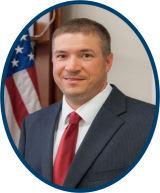Twenty Years of Homeland Security Research: How it Started and Where We Are Now Webinar
About the Webinar
Originally presented September 16, 2021
U.S. EPA played a key role in the nation’s response to the events of September 11th and the Amerithrax incident shortly thereafter. This webinar will provide an account of EPA’s emergency personnel responsibilities and expertise during the 2001 Amerithrax incident, where letters containing anthrax spores contaminated the Brentwood post office in Washington, D.C., as well as the Hart Senate Office Building on Capitol Hill. Speakers will discuss how this incident and the events of September 11th necessitated the establishment of a Homeland Security Research Program at U.S. EPA. This Program provides scientific and technical expertise to help the United States to prepare for, respond to, and recover from a potential or active chemical, biological, or radiological attack. Through the years, the Homeland Security Research Program has built up capability through a foundation of research to assist emergency responders and decision-makers on a number of incidents, such as ricin, water contamination, Fukushima, and Ebola. The Program continues to develop capability to respond to large-scale contamination incidents and improve the ability of water utilities to prevent, prepare for, and respond to water contamination that threatens public health. As the Program fulfills its mission by responding to current events, such as the COVID-19 pandemic, fentanyl contaminations, and cyberattacks on critical infrastructure, it also look to the future to apply what we know now to what’s potentially to come and ensure the United States is able to prepare for, respond to, and recover from those events.
Science Matters Story: Twenty Years of EPA Homeland Security Research
About the Presenters

Mark Durno, EPA Region 5 On-Scene Coordinator, has served as an On Scene Coordinator, Supervisor, and Deputy Chief in the Emergency Response Branch of the Superfund Program in Region 5 since 1997. He currently serves as Region 5’s Homeland Security Advisor. Mark’s efforts have included numerous emergency response actions to chemical and oil spills; support to national counter-terrorism planning and exercises; and, international biological response planning. Notably, Mark has worked on or coordinated major incidents, including the Capitol Hill Anthrax response in Washington, D.C; Hurricane Katrina/Rita disaster response in Louisiana; and, the Flint Drinking Water Incident in Michigan. For his accomplishments, Mark was named EPA’s National On-Scene Coordinator of the Year in 2007 and received a Gold Medal for Exceptional Service in 2017.

Tim Oppelt, Former Director of EPA’s National Homeland Security Research Program, is a 36 year veteran of EPA research, beginning his service as a US Public Health Service officer in 1970. He is a graduate of Cornell University in civil engineering and sanitary engineering and received an MBA from Xavier University. During his research career he focused on advanced wastewater treatment technology and solid and hazardous waste management. His leadership roles included; Director of the Hazardous Waste Environmental Research Laboratory, Director of the National Risk Management Research Laboratory, Director of the National Homeland Security Research Center and EPA Acting Assistant Administrator for Research and Development. He was twice awarded the Senior Executive Service Distinguished Rank Award and received the EPA Distinguished Career Award when he retired in 2006.

Gina Perovich, Director of EPA’s CBRN Consequence Management Advisory Division (CMAD) in the Office of Land and Emergency Management. CBRN CMAD’s mission is to prepare and support the emergency response community during CBRN incidents and events involving other unique hazards. They provide science-based solutions, advice, and response services during all phases of consequence management: characterization, decontamination, clearance and waste management. Prior to joining OEM, Gina spent over 15 years in EPA’s Office of Research and Development, managing a wide variety of projects and personnel across a variety of disciplines, including water quality, drinking water, ecology, air, global climate change, and human health. Gina holds an MS in marine biology and biochemistry from the University of Delaware and a BS in biology from Trinity University.

Dr. David Travers, Director of EPA’s Water Security Division in the Office of Water, manages a team of engineers and scientists in providing tools, training, and direct technical assistance to the 152,000 drinking water systems and 16,000 wastewater systems in the US. Each year, the Water Security Division trains over 5,000 water/wastewater utilities, state/tribal officials, and federal emergency responders to become more resilient to any natural or manmade incident—including cyberattacks, climate change, hurricanes, drought—that could endanger water and wastewater services. Prior to David’s current role, he directed the Drinking Water Infrastructure Survey which assessed the current and future capital investments needs of drinking water systems. David has a PhD in environmental engineering and a Master of Public Health from the University of Michigan, and a Bachelor’s in History from the University of Chicago

Dr. Shawn Ryan is the Director of the Homeland Security & Materials Management Division in the Office of Research and Development's (ORD) Center for Environmental Solutions and Emergency Response. In addition, Shawn is the National Program Director for EPA’s Homeland Security Research Program. He has over 19 years of experience at EPA, including 16 years leading research to support EPA’s Homeland Security mission. He initiated and led several interagency projects that have made significant advances in Homeland Security and served as models of partnership. His research focuses on biological/chemical agent decontamination.

Dr. Greg Sayles is the Director of the Center for Environmental Solutions and Emergency Response in ORD and the lead for EPA research efforts on SARS-CoV-2. Greg has 30 years of experience at EPA, starting as a research chemical engineer supporting the Agency’s clean up program by developing approaches to remediate contaminated soils and sediments. He built a highly successful government (EPA, DOE, DOD)-industry (DuPont, GE, Monsanto) partnership to develop cleanup approaches for chlorinated solvents. Greg later served in various ORD leadership positions associated with drinking water, pesticides, and endocrine disrupting chemical research programs. In addition, he led the development of the 2008 and 2011 research plans for EPA’s Homeland Security Research Program.
